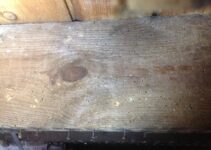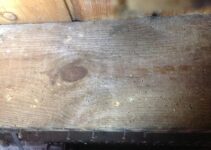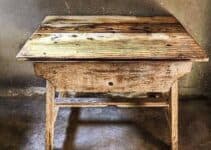Spiders can be most households best friend or worst enemies. Whether you have a fear of spiders or keep them around to rid your house of tiny insects they could be a new treatment for woodworm.
Do spiders eat woodworm? Spiders eat woodworms, but not all species can do this. A species called Pholcus phalangioides is capable because of their living habitat, food habits, and regeneration necessities.
In contrast, they are considered ideal for woodworm elimination in a greener way.
Do They Eat Them, Why Or Why Not?
According to recent studies carried out at the University of Huddersfield, spiders have the potential to serve as an environmentally friendly woodworm treatment method.
Charles Hippisley-Cox of Huddersfield University conducted the study, and his findings imply that spiders actively seek out woodworm beetles to eat them before the beetles reach the last stage of the woodworm life cycle.
If you have a problem with woodworm, maybe you shouldn’t clean up those old cobwebs because of the spiders.
Spiders, as natural predators of woodworm beetles, may be able to accelerate the reduction of woodworm infestations in a household, according to new research.
It could be a good idea to save the spider the next time you see one crawling across the floor, make friends with it, and let it walk free instead of killing or throwing it outside!
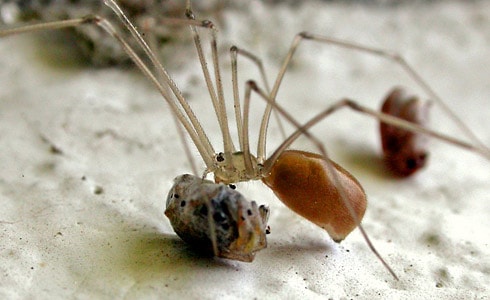
How They Help With Woodworm Infestations
Even though spiders have been recommended as a potential woodworm therapy, further research is needed to draw firm conclusions. If you think you have a woodworm infestation, you should consult professionals who can advise you and recommend the best woodworm treatment.
However, spiders are recommended as an experimental, eco-friendly alternative if you want to try them.
Action of Phyllodocus phalangioides
The spider species Pholcus Phalangioides which are Pholcus, is known by the slightly better colloquial term “Cellar Spider,” but it is by no means limited to cellar-dwelling.
Instead, it prefers to make its home under furniture, in cupboards, or, most obviously, in upper corners of living rooms, where it hangs with its characteristic upside-down posture.
Their webs are not as well-organized as those of other species, and they lack the funnel forms that make most spider traps so effective. Instead, Pholcus spiders actively seek out their prey.
Their webs serve two purposes: they provide a home for their young, and they act as a staging location for their hunts. When they locate a potential prey, they can flip the silk from their spinnerets to distract them while they close in and inject their venom.
Fresh catches are bundled together and deposited after being drained dry.
Despite seeming beautiful and moving slowly, these spiders are deadly poisonous carnivores. However, their tiny fangs cannot penetrate human skin, so we need not worry.
They have a successful hunting technique that can be utilized against other spider species, including the massive house spiders (Tenegaria) that can weigh up to ten times as much as them.
The Anobium punctatum spends a significant portion of its life cycle in a wooden structure, where its larvae feed and develop into adult beetles.
To cause a major break in the Anobium punctatum life cycle, a stable population of hungry spiders must exist as the beetles leave the wood, preferably before the adult beetles mate and deposit eggs.
A follow-up study could determine how spider colonies could be mass-produced and commercially distributed to homeowners that want non-chemical alternatives to pesticide spraying.
Small releases of juvenile spiders into infested buildings have shown promising results in informal experiments, but more rigorous research is needed to validate these results.
There may be room for improvement in the design of “nesting spaces” that shield spiders from regular maintenance. Pest control services may offer these “nests” as a “green” substitute for chemical treatments.
As spiders are sometimes incorrectly linked to untidy or unclean residential situations, perception-related challenges may need to be overcome.
It is untrue that Pholcus phalangioides prefers unclean or dusty environments. In fact, if the existing web becomes too dirty, the spider will just build a new one.
Another potential drawback for spiders is that some people fear them due to their association with spiders and the fear they inspire.
However, spiders’ leisurely, graceful movements are not as terrifying as the quick movements of the “big hairy ones.
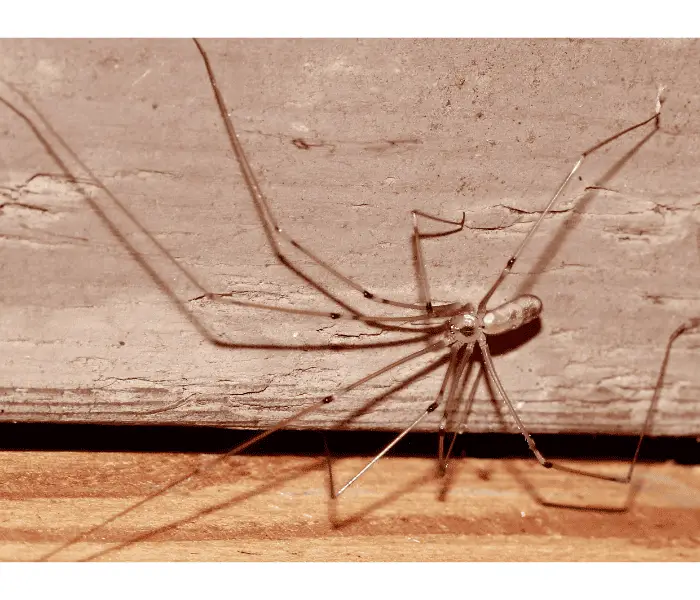
Conclusion
When you look at these spiders’ reproduction and eating habits, you will also understand that they do not thrive without food and eventually decrease in population.
Since the populations of these spiders can expand fast in response to an increase in available food sources, once the woodworms decrease, the spiders are bound to dwindle. It doesn’t matter what time of year it is. As long as there’s plenty to eat, females will start laying eggs, and males will start mating.
The female will initially carry up to 30 eggs in a silken web between her chelicerae, i.e., jaws, and once the eggs hatch, the young spiderlings will share her web.
The baby spiderlings are transparent. If food is scarce, the mother will re-eat her young to ensure their survival.
In short, Pholcus is the greener, cheaper and amicable solution for woodworm if the claim is true and proven to work as expected.
Current studies are limited and may not provide the complete picture of what’s to come yet, but for what we have, they are encouraging.
